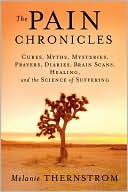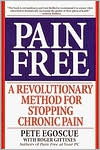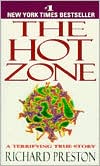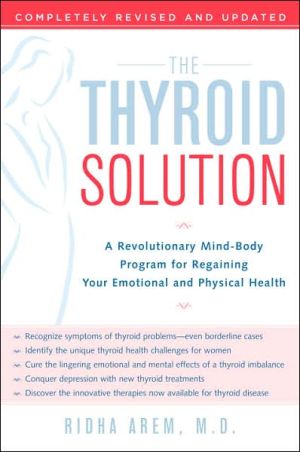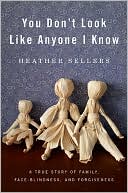Behavior and Medicine
A unique textbook, comprehensive and up-to-date, with a practical, clinical emphasis and a structure that is ideally suited for teaching behavioral sciences in the medical school classroom.\ This new edition of one of the most popular and highly regarded texts on behavioral and social science in medicine has been fully revised and updated. It is structured to reflect the latest Institute of Medicine recommendations on the teaching of behavioral and social sciences in medicine. Its 25 chapters...
Search in google:
A unique textbook, comprehensive and up-to-date, with a practical, clinical emphasis and a structure that is ideally suited for teaching behavioral sciences in the medical school classroom. This new edition of one of the most popular and highly regarded texts on behavioral and social science in medicine has been fully revised and updated. It is structured to reflect the latest Institute of Medicine recommendations on the teaching of behavioral and social sciences in medicine. Its 25 chapters are divided into five core domains.Under the careful guidance and editing of Danny Wedding, PhD, Professor of Psychology at Alliant International University in San Francisco, CA, and Margaret L. Stuber, MD, the Jane and Marc Nathanson Professor of Psychiatry and Biobehavioral Sciences at UCLA, over 40 leading educators from major medical faculties have contributed to produce the most comprehensible and well-designed text in its field. Unique to Behavior and Medicine is the use of hundreds of works of art, poetry, and aphorisms to provoke thought and interest and to illuminate the most important points. Warren Lee Holleman This is an attractive, interesting book on psychosocial aspects of health, featuring chapters on the various stages of the life cycle; health issues related to love, sexuality, and work; assessing the mental health of patients; and unhealthy behaviors associated with preventable illnesses. Authors from throughout the United States contributed to the volume. The purpose is to describe how behavior affects health and to encourage the reader to practice a more humane, effective style of medicine. This is an extremely important task, considering the way medical education gives insufficient attention to the psychosocial component of health and the therapeutic value of empathy. The book meets this objective. Targeted especially to medical students, the book will be useful to students in other health professions as well, including nursing, public health, psychology, and physician assistants. The most striking feature is the extraordinary number of paintings, photographs, poems, and literary excerpts used effectively to illustrate the themes of the chapters. This second edition has significantly fewer references than the earlier one, appropriate given its purpose of introducing the subject to a broad range of students. The book is an excellent introduction to the psychosocial dimension of health, illness, and medicine. The chapters are written in a compact, clinically relevant, and interesting style that will engage all students, including those seeking a different perspective than the standard one taught in basic sciences and those who generally have to be dragged kicking and screaming to the trough of behavioral medicine.
1Mind, brain and behavior32Families, relationships, and health233Birth, childhood, and adolescence314Early adulthood and the middle years475Old age576Death, dying, and grief797Chronic benign pain918Stress and illness1119Addictions12510Psychodynamic approaches to human behavior13311Facilitating health behavior change14512Human sexuality15313Medical student and physician well-being16714Working with other professionals, organizations, and communities17515The physician-patient relationship18916Communicating with patients20117Diagnostic reasoning in medicine21918Patient assessment22719Recognizing and treating psychopathology in primary care23920Managing difficult patients24921The humanities and the practice of medicine26122Culturally competent health care27123Complementary and alternative medicine28124The impact of social inequalities on health care28725Health services in the United States30326American medicine is sick321App. ABehavioral and social science topics of high and medium priority for inclusion in medical school curriculaApp. BMedical statistics & research design333App. CAbridged directory of humanities resources for medical education and practice351
\ From The CriticsReviewer: Bradley R. Cutler, MD(Rush University Medical Center)\ Description: This is the fifth edition of an extremely popular book on behavior in medicine, edited by the highly regarded Danny Wedding, professor of psychology at Alliant International University, and Margaret Stuber, professor of psychiatry at UCLA.\ Purpose: As the editors make clear, "all physicians need to be conversant in the basic principles of behavioral science." Their aim is to help readers practice medicine in a more humane, gentle, and effective manner.\ Audience: Targeted specifically for medical students with the goal of helping them pass the behavioral science section of the USMLE, this book is extraordinarily useful for all those interested in the interaction of behavior and medicine.\ Features: Composed of 25 chapters, the book is divided into six main parts. Part I focuses on mind-body interactions in medicine, part 2 highlights patient behavior, part 3 emphasizes the importance of the physician's role as healer, part 4 illustrates the power of physician-patient interactions, part 5 deals with both social and cultural issues in healthcare, and part 6 presents USMLE-style questions and answers. All chapters are connected by five core themes, including poignancy and the beauty of the transitions of life and the salience of the sense of self. These themes are brought to life with poems, paintings, and photographs. Each chapter, moreover, contains a summary of important concepts followed by a case study emphasizing key principles.\ Assessment: Nearly all books in the field of medicine focus primarily on the biomedical model of disease without taking into account the interaction of medicine and human behavior. Yet it is the richness of behavior that transcends all aspects of health and illness. Medicine, after all, is both a science and an art, and this book masterfully explores the multidimensional nature of medicine. With a call for medical schools to integrate behavioral and social sciences into their curriculum, this book teaches medical students to be excellent diagnosticians in addition to compassionate physician healers. Students will learn about stress and illness in patients as well as dealing with their own health and well-being. The USMLE style questions and answers will help solidify students' newfound knowledge. In an era where the amount of medical information is growing exponentially, it is essential to remember one's humanity and understand how one's behavior influences all aspects of medicine. The principles elucidated in this book are true keystones of medical education.\ \ \ \ \ Warren Lee HollemanThis is an attractive, interesting book on psychosocial aspects of health, featuring chapters on the various stages of the life cycle; health issues related to love, sexuality, and work; assessing the mental health of patients; and unhealthy behaviors associated with preventable illnesses. Authors from throughout the United States contributed to the volume. The purpose is to describe how behavior affects health and to encourage the reader to practice a more humane, effective style of medicine. This is an extremely important task, considering the way medical education gives insufficient attention to the psychosocial component of health and the therapeutic value of empathy. The book meets this objective. Targeted especially to medical students, the book will be useful to students in other health professions as well, including nursing, public health, psychology, and physician assistants. The most striking feature is the extraordinary number of paintings, photographs, poems, and literary excerpts used effectively to illustrate the themes of the chapters. This second edition has significantly fewer references than the earlier one, appropriate given its purpose of introducing the subject to a broad range of students. The book is an excellent introduction to the psychosocial dimension of health, illness, and medicine. The chapters are written in a compact, clinically relevant, and interesting style that will engage all students, including those seeking a different perspective than the standard one taught in basic sciences and those who generally have to be dragged kicking and screaming to the trough of behavioral medicine.\ \ \ From The CriticsDespite the suffering evident in the cover art, by Edward Munch, Wedding (psychiatry and neurology, U. of Missouri-Columbia School of Medicine) is optimistic about the healing power of art and relationships. The 29 chapters explore healthcare-patient/societal relationships, bases of human behavior, the life cycle, patient issues, decision-making about patients, and behavior and disease. Appends information on assessment, medical statistics and research design, the medicine-literature link; poetry; and the answer key to practice questions. Annotation c. Book News, Inc., Portland, OR (booknews.com)\ \ \ \ \ 4 Stars! from Doody\ \


